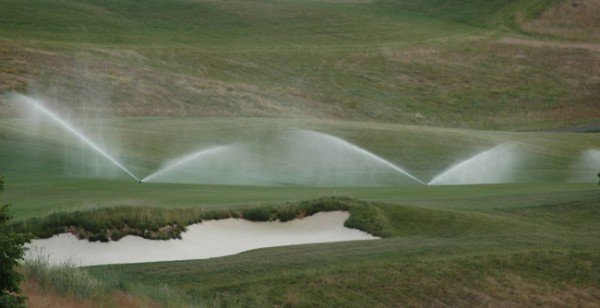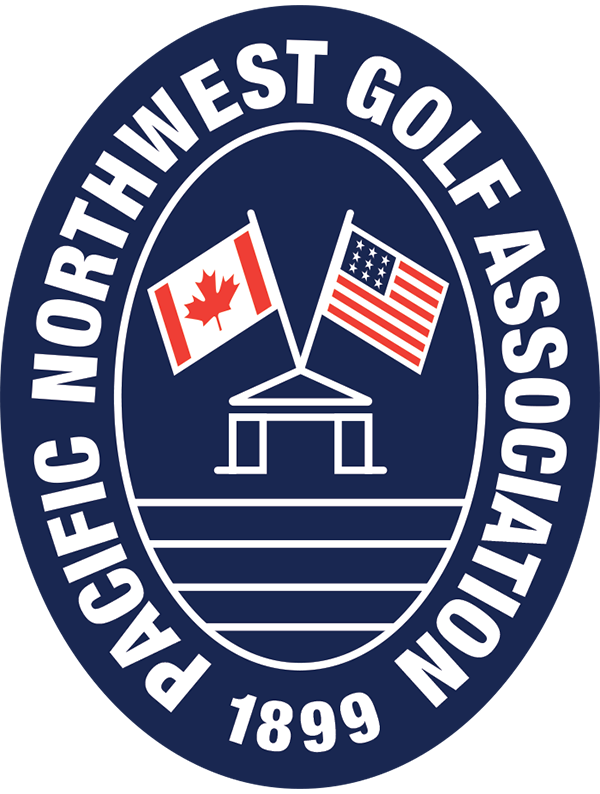Brown is the New Green

What can brown do for you – golf is a four season sport, so why not let your course experience all four seasons
by Blaine Newnham
I’m very interested to see how this plays out.
At the golf club where I have been a member for nearly 25 years – Wing Point G&CC on Bainbridge Island, Wash. – we recently spent the money to put in a new irrigation system.
Had no choice, really. The old one was shot.
“I’m committed to fast, firm conditions,” said our able superintendent, Mike Goldsberry. “With the new system, I’ll have more control and we’ll actually use less water.”
We’ll see.
The members I talk to believe the new system will eliminate the brown summer-time grasses that border our fairways and occasionally include them. These are the same members who I’m afraid care about granite countertops in the locker rooms. I don’t.
With the wet spring that we’ve had, the golf course is now wall-to-wall green. And I honestly believe the majority of members will want it to remain that way.
They don’t see brown as beautiful, as I do.
I long for the summer months when the course firms up, when you actually get roll on your tee shot, when I might reach No. 9 in two because I can ricochet it off a hill right of the green, but had also better be careful of an errant shot left that might skitter out of bounds.
The rough doesn’t need to be watered to protect the course rating – let balls hit sideways, roll where they may. Even if it means into the trees or OB.
Enough of soft and receptive and wet. We have it all winter.
When I joined Wing Point in 1987, it was nine holes and without irrigation. The watering that went on was for tees and greens.
The place didn’t look great, but the dormant fairway grasses were fine to play from.
Especially on an island where the amount of water we have is marginal, we ought to be finding ways to cut the use of water in summer, while the same time enjoying the conditions it produces, even the beauty of a tawny tint to the edges of the fairway. It’s summer, dang it.
Less water can also mean less money spent on maintenance. The word now in vogue is “sustainable.”
The new irrigation system might be computerized and dependable, but as Larry Gilhuly, the Northwest agronomist for the USGA says, “If a golf course is not hand watered around the greens and fairway landing areas, it is generally being over-watered, as no automatic irrigation system is as good as a trained human with a hose and the knowledge on how to use it.”
In an article in the Wall Street Journal, Jim Hyler, president of the USGA, said in a discussion of economic issues facing the sport, “Playability should replace aesthetics as a primary consideration. Playability should include concepts of firm, fast and even brown, and allow the running game to flourish. Brown can become the new green.”
Hyler pointed to Chambers Bay, where the USGA will hold this summer’s U.S. Amateur and the 2015 U.S. Open.
With sandy soil and fescue grasses and a bent on being a true links course, Chambers Bay uses but half the water of nearby courses.
But, it looks a little brown – the way St. Andrews would look.
As the WSJ story concludes, “Not everyone who plays Chambers Bay immediately gets it. Post-round player survey responses range from many ecstatic 10s (on a scale of one to 10) to quite a few threes. That’s the expectation problem at work. It’s a different kind of golf experience.”
The point is that European courses cost less money to maintain than do American courses, and use less water. They don’t have the “Masters” expectations.
I hope our members don’t either. We’ll see.
Blaine Newnham is a former sports columnist and assistant managing editor for the Seattle Times. He covered the 1966 U.S. Open, following Ben Hogan around the Olympic Club. He covered his first Masters in 1987, when Larry Mize won it in a playoff with an unlikely chip shot. He covered the four majors of the “Tiger Slam”, when Woods won his four consecutive championships. In 2002, Blaine wrote a book titled “Golf Basics”.






